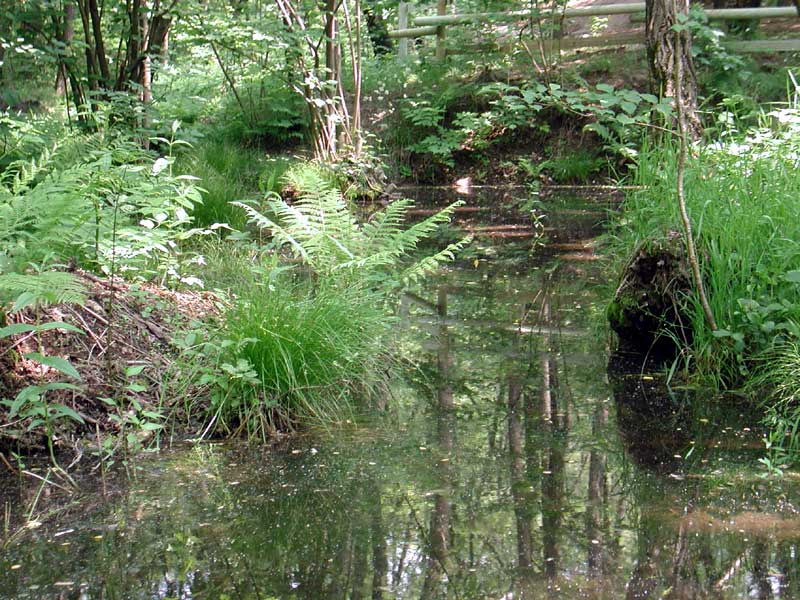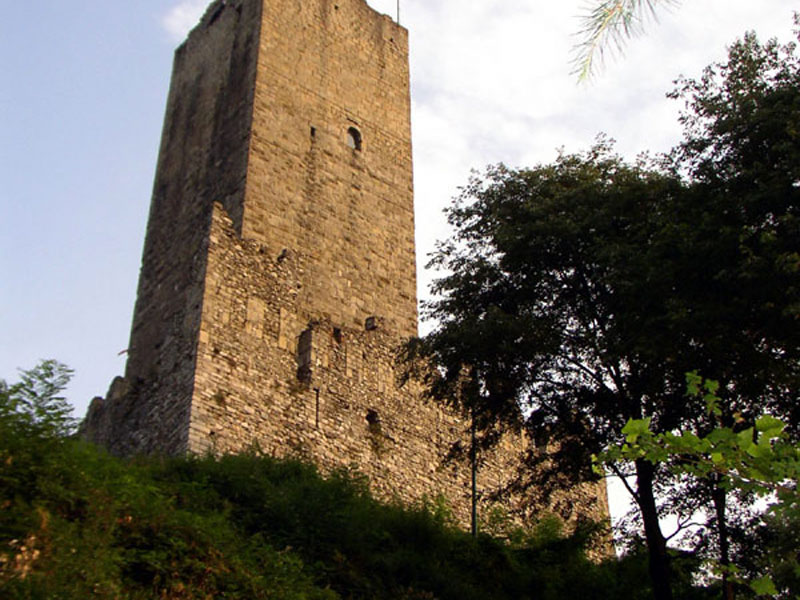Protected Area
Identity Card
- Spina Verde di Como Regional Park:
- Land Surface Area: 1'179.00 ha
- Regions: Lombardia
- Provinces: Como
- Municipalities: Colverde, Como, San Fermo della Battaglia
- Establishment Measures: LR 10 04/03/1993
- PA Official List: EUAP0737
- Park Authority: Ente di Diritto Pubblico Parco Spina Verde di Como
- Further managed Protected Areas:
- ZSC Spina verde
![]() The Park Regulations (PDF - 202Kb)
The Park Regulations (PDF - 202Kb)
Geographical Features
The name Spina Verde has been given to the hilly ridge extending
in the north-west of Como, astride the Italian-Swiss border, and
including the mountains Sasso di Cavallasca (618m) - the highest peak
- Mt. Croce (550m), Mt. Caprino (487m), and Mt. Baradello (432m),
where the tower of the homonymous castle stands out as the symbol of
the town of Como and of Spina Verde.
Given the particular
configuration of the area which, like a thorn ("spina" in Italian),
insinuates between the town of Como and the suburban area towards
south-east, the Park represents the green lung of the town.
Geology
The frame of Spina Verde hills is made of sedimentary rocks dating back to the Tertiary period, in particular to the Oligo-Miocene (30-25 million of years), mainly characterized by conglomerates irregularly alternating with sandstone and marl. These lithotypes, gathered by the geological literature in the "Gonfolite" formation, derive from the deposits of the materials transported by paleo-Adda, a big river running in a valley corresponding to the current branch of the river Lario in Como and flowing with a big delta into the Po Plain sea. During the Quaternary period, the big glacial flows descending from the Alps shaped our territory with intense erosion and excavation phenomena, transporting downstream heaps of rocky detritus deriving from these processes. At the moment of the withdrawal of the glaciers, the transported materials have been abandoned giving origin to the morainic deposits - a chaotic mix of big blocks, gravels, sands, and silt - or to single erratic boulders, the so-called "trovanti".
Hydrology
The area is rich in springs which can be located in small wetlands or at the origin of the watercourses generally presenting a seasonal regime and a variable flow. According to the popular tradition, some of them have therapeutic properties. In the south-western part of Spina Verde there are the springs of Seveso and of tributaries of the streams Faloppia and Lura.
Flora
The kind of rocks present in the area, the gradient of the slopes, and
their different exposure - that is the different geographical and
ecological features - lead to the lack of homogeneous vegetation in
Spina Verde. The slopes with a northern exposure facing the town are
rather steep; they are originally characterized by a mesophilous wood -
that is a wood requiring not too warm environments - consisting of
broadleaf trees like Common Oaks, European Hornbeams, Lime Trees, and
Maples.
The slopes with a southern exposure are sunny and
characterized by a drier soil and a warmer microclimate; here the
original wood is a xerothermophilous wood - that is adapted to warm and
dry environments - in which the dominating species are the Pubescent
Oak, the Sessile Oak, the Manna Ash, the Hop Hornbeam, and the Scotch
Pine. When the slopes are too steep for arboreal plants to survive -
for instance along the mule track developing along the southern slope
of Sasso di Cavallasca - it is possible to find vegetal species
adapting to the dry and sunny cliffs, that is succulent plants like
houseleeks and Sedum.
However,
the original vegetation has suffered during the centuries from an
intense human impact; the current situation is therefore the result of
the human action which, from the Roman period, has modified the
original woods with the introduction of new species, fires, wood
cutting, the terracing of the slopes to obtain areas fit for
agriculture, breeding, and building.
At the moment, the chestnut
tree woods represent the most rich floristic formations in Spina Verde,
above all in the western section of the Park. This essence was
introduced by man for the economic value of its fruits and timber.
There are high-trunk and coppice chestnut tree woods, the latter
representing a typical form of forest management enabling a faster
growth. Together with chestnut trees there are Common Oaks, Birches,
and Scotch Pines dominating in the western section. The eastern part is
characterized by stretches of wood mainly consisting of Locust Tree, an
invasive essence coming from Northern America and introduced in our
areas in the 17th century.
Fires and cutting led in some areas the
replacement of forest formations by shrub vegetation, like shrub
formations and moorlands characterized by Hazelnut Tree, Butterfly
Bush, or by Heather, Scotch broom, and Spiny Broom.
Also the grasslands are the results of the human influence on the
territory: they were maintained as pastureland for cattle or meadows
periodically mown and manured. At the moment this kind of use is very
limited and the abandoned grasslands are characterized by a thin and
delicate vegetal covering subject to erosion and to a progressive
impoverishment.
Fauna
As far as the fauna is concerned, in the woods of Spina Verde you can still find some species of Mammals among which the various voles, the common squirrel, the dormouse, the common hare, the fox, and the stone marten. There are also several species of birds, both nesting and migratory birds, like the Great Spotted Woodpecker, the Green Woodpecker, the Nuthatch, the Skylark, the Robin, the Wren, the Nightingale, the Blackbird, the Chaffinch, the Blue Tit, the Great Tit, the Blackcap, the Chiffchaff, the Black Kite, a diurnal bird of prey usually flying over and living on the cliffs of Mt. Croce and the Owl, a nocturnal bird of prey. There are also Reptiles like the Lizard, the Western Whip Snake, the Aesculapian Snake, the Slow Worm and some vipers. In the wetlands near the streams and the small stretches of water, it is possible to find several species of Amphibians, among which Red Frogs, Toads, and Salamanders.
The Middle Ages - Baradello Castle
Baradello Castle is situated on the hill dominating the valley, almost
a stone sentinel watching over the town and the Park. For this reason
its image has been chosen as a symbol of Spina Verde Park.
The
area of the Castle has been a fortified area since the beginning of
times. Probably, a very important fortification of the so-called "Limes
prealpino" was built here: it belonged to the network of watchtowers of
the late Roman Empire against the Rhaetic invasion. There are later
documents referring to the period of the "Ten Years War" between Como
and Milan (1118-1127), when the fortification became the reference
point for Como in the struggle against the troops of Milan. The defeat
of the population of Como led to the destruction of the town and of the
fortifications, including the castle. The presence of the current
building is given to Redbeard who, after the victory over Milan and the
relative peace of 1158, ordered the reconstruction of Como and the
building of the Castle on the ruins of more ancient settlements. In the
period of transition from Communes to Signories, within the struggles
among the Torriani, Rusconi, and Visconti families, the castle was in
the middle of interests and struggles which must be considered within
the more general struggle between Como and Milan. It is enough to quote
the bloody episode of the death of Napo Torriani, who, defeated in
Desio in 1277 by Archibishop Ottone Visconti, was held for 19 months in
a cage hanging outside the tower.
The castle was then
discontinuously used until its demolition, ordered in 1527 by the
Spanish conquerors who wanted the Austrians not to use it.
At the
beginning of the 20th century the works of recovery promoted by a
committee of citizens began and in 1927 the castle was given to the
Municipality of Como. Today, the volunteers of "Club Baradel" are
available for a visit to the Tower and the castle has become again the
symbol of the town, while the quarters relive in allegorical form the
civil war and the civil strifes with Palio del Baradello.







